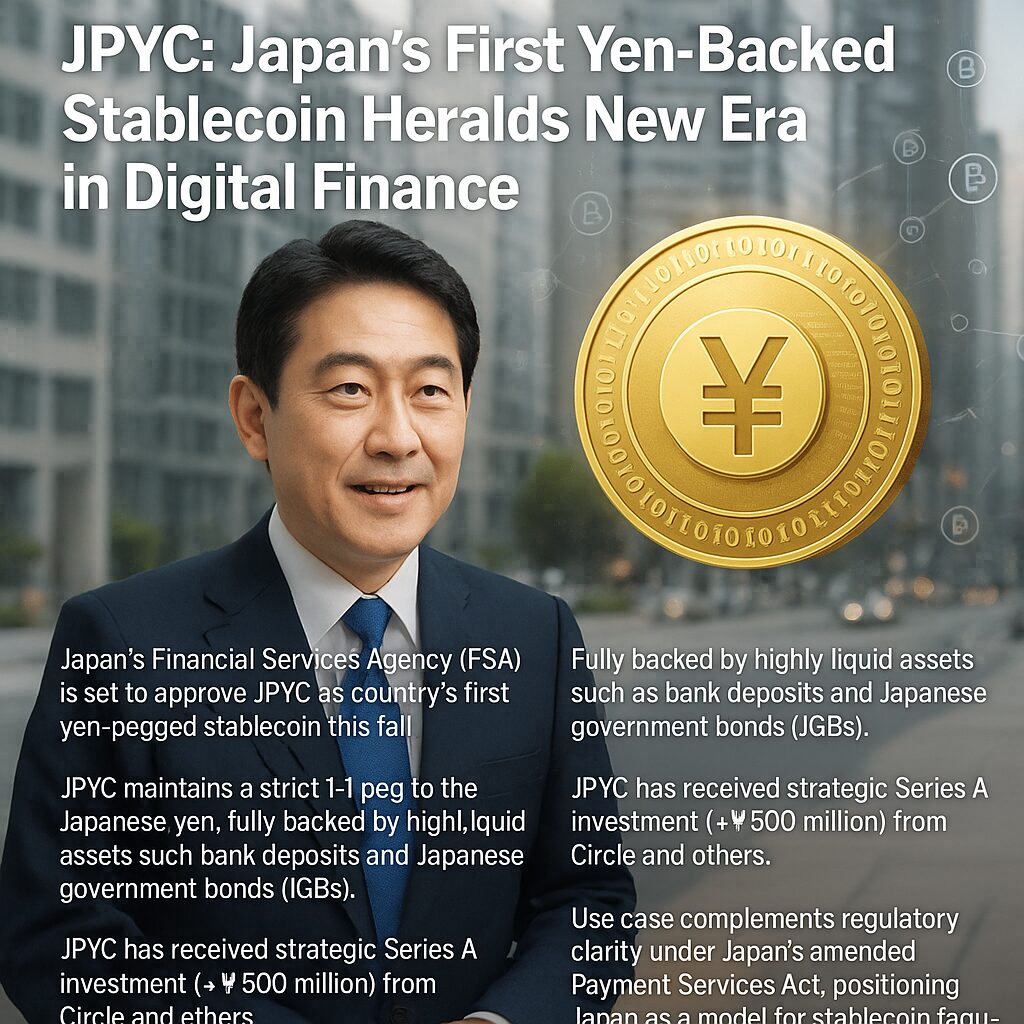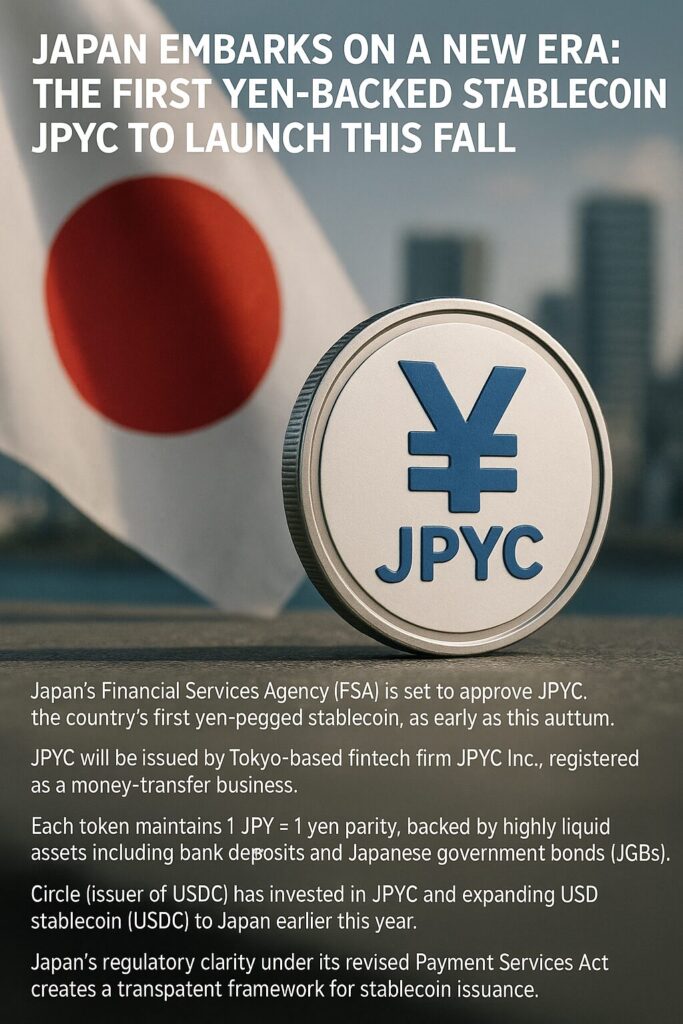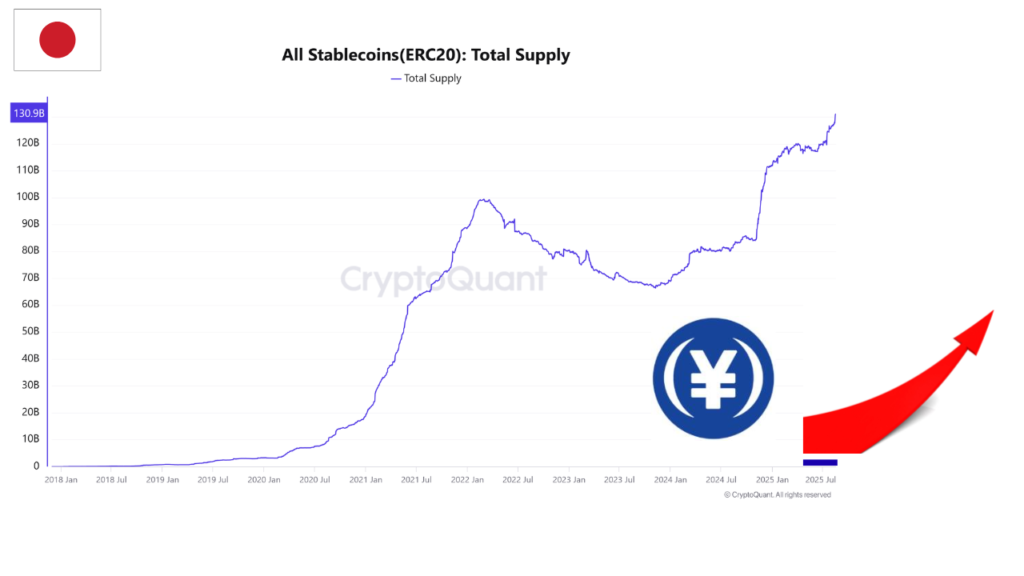
Main Points :
- Japan’s Financial Services Agency (FSA) is set to approve JPYC as the country’s first yen‑pegged stablecoin this fall, making JPYC a registered money‑transfer business.
- JPYC maintains a strict 1:1 peg to the Japanese yen, fully backed by highly liquid assets such as bank deposits and Japanese government bonds (JGBs).
- The introduction of JPYC may drive new institutional demand for JGBs, reshaping Japan’s domestic bond market.
- JPYC has received strategic Series A investment (~¥500 million, approx. US $3.4 million) from Circle and others.
- The move complements regulatory clarity under Japan’s amended Payment Services Act, positioning Japan as a model for stablecoin regulation.
- Use cases include cross‑border remittances, corporate payments, DeFi integrations, and potentially tokenized securities. JPYC aims for an issuance target of ¥1 trillion (≈ US $6.8B) over three years.
1. Regulatory Breakthrough: FSA Prepares Approval of JPYC This Autumn
Japan’s Financial Services Agency is moving to approve JPYC as the first domestically issued stablecoin pegged to the yen, potentially launching as early as this fall. This approval hinges on JPYC Inc. registering as a money‑transfer business under the revised Payment Services Act—an essential step to meet regulatory requirements.
This marks a standout moment in Japan’s digital asset development, expanding its regulatory sandbox beyond foreign stablecoins to include a home‑grown alternative.
2. Stable Value, Solid Backing: 1 JPYC = 1 JPY
JPYC is engineered to maintain a robust 1:1 peg with the Japanese yen. Each token is fully collateralized with high‑liquidity assets, predominantly bank deposits and Japanese government bonds (JGBs), ensuring stability and redeemability.
Users—individuals, corporates, or institutional—can purchase JPYC via bank transfer, which is then credited to their digital wallets.
3. Japan’s Stablecoin in a Global Market Dominated by the Dollar
The global stablecoin market, propelled by USD‑pegged tokens like USDT and USDC, has grown to over US $286 billion. While Japan already supports USDC following FSA approval earlier in the year, JPYC introduces a yen‑based domestic alternative for the first time.
This shift addresses currency sovereignty concerns, offering a reliable digital yen option for domestic and international use.
4. Transforming JGB Demand: JPYC as a Bond Market Catalyst
JPYC’s backing strategy could significantly affect demand for Japanese government bonds. Drawing parallels with how major US stablecoin issuers purchase Treasury bonds, JPYC could emerge as a large institutional buyer of JGBs.
Okabe, the company’s representative, has warned that jurisdictions slow to adopt stablecoin frameworks might face rising bond yields due to missed new sourcing of demand.
5. Strategic Backing: Circle’s Investment
In its Series A round, JPYC secured approximately ¥500 million (~US $3.4 million) in funding, with Circle as a key investor. This aligns JPYC with established stablecoin infrastructure and signals confidence from seasoned players in the space.
JPYC was founded in 2019 in Tokyo and has already operated as a prepaid payment instrument with FSA-approved functionality.
6. Regulatory Clarity: A Robust Framework
Japan’s 2023 amendment to the Payment Services Act explicitly defines fiat‑pegged stablecoins as “currency‑denominated assets” and restricts issuance to banks, trust firms, or registered money‑transfer operators. JPYC’s approval operates within this clearly defined legal regime, offering transparency and investor protection.
7. Use Cases and Market Potential
JPYC targets broad use cases: international remittances, corporate settlements, DeFi protocols, and tokenized finance. Hubbis reports a three‑year issuance goal of ¥1 trillion (~US $6.8 billion).

Its appeal also extends to hedge funds and family offices, which see opportunities in carry trades while remaining within a regulated environment.
[Insert Infographic: “JPYC vs. USD Stablecoins: Market Size, Use Cases, Backing, Regulation” here.]


Conclusion
With JPYC poised to become Japan’s inaugural yen‑pegged stablecoin, backed by cash‑equivalent assets and operating under a transparent regulatory framework, it represents a significant leap forward for domestic digital finance. Backed by Circle and targeting broad issuance and real‑world utility, JPYC may reshape financial markets—from bond demand to DeFi adoption—while reinforcing Japan’s position as a leader in regulated stablecoin innovation.

